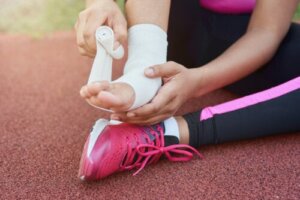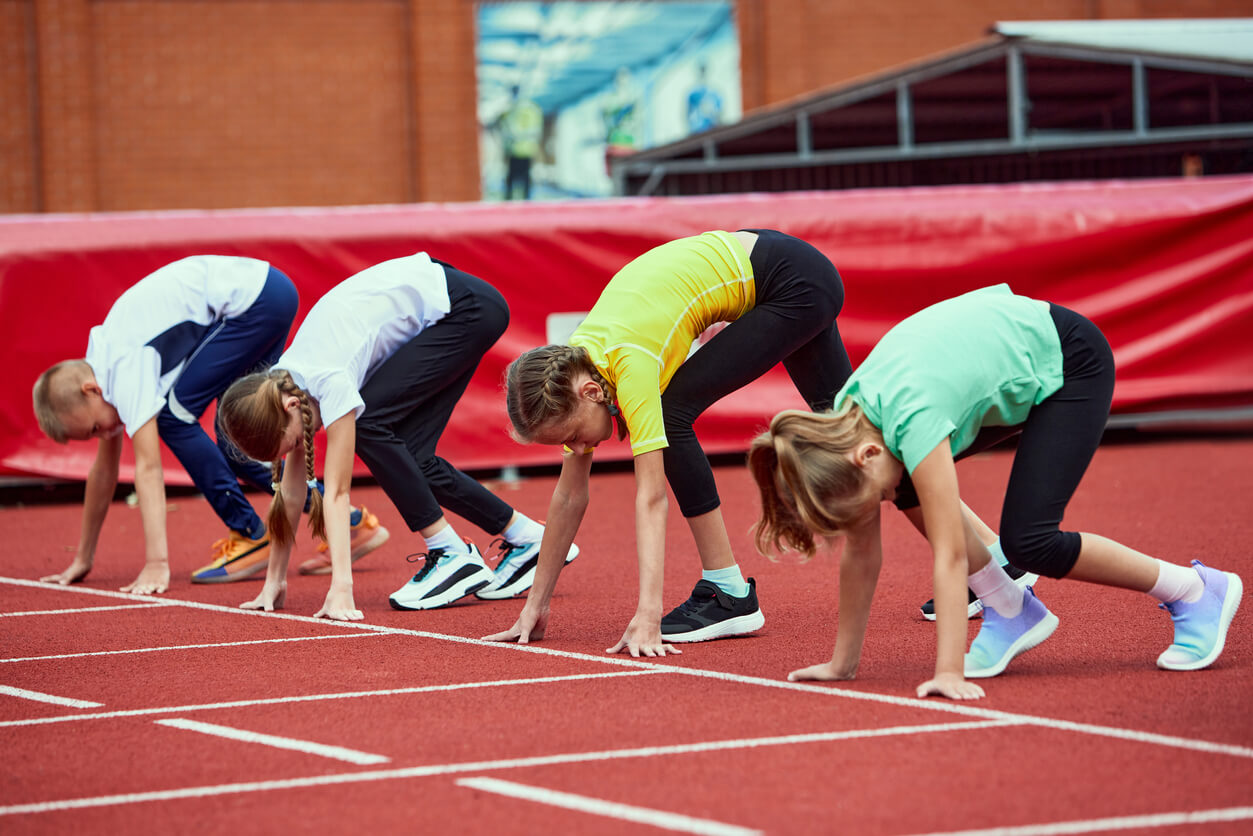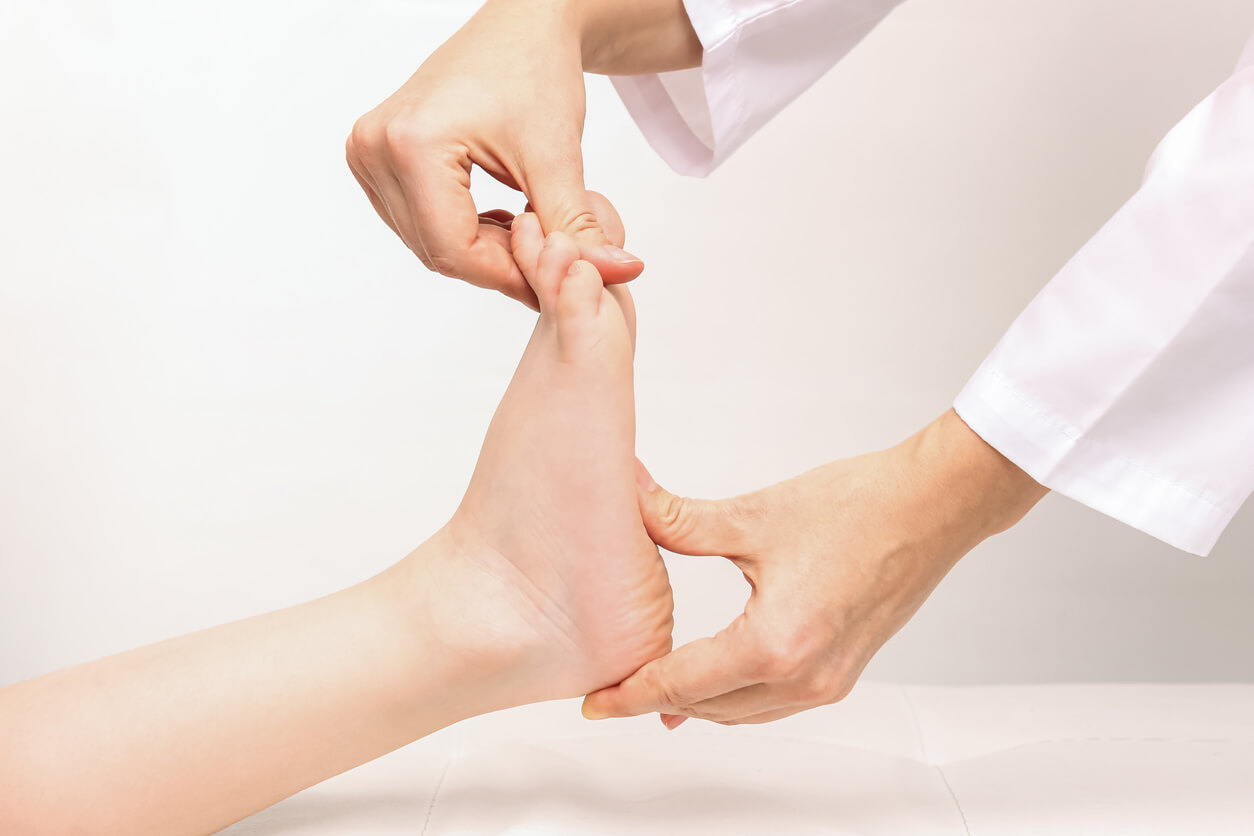How to Take Care of Children's Feet During Sports?


Written and verified by the dermatologist Maria del Carmen Hernandez
In order to take care of children’s feet during sports, care and hygiene habits should be taught that they can learn and put into practice before and after the activity.
Prevention is always the best medicine, so make sure that children’s feet stay healthy. Even when they’re in the middle of sports, they can suffer if they don’t take the necessary precautions.
Learn how to take care of children’s feet during sports
It’s important to take care of children’s feet, regardless of their age. Therefore, here are some simple tips to ensure that they stay in the best health when playing sports.
1. Wash feet thoroughly
Preventing fungal and bacterial infections starts with proper foot hygiene at bath time. To do this, use water and neutral soap. Washing their feet several times a week is essential and helps to considerably reduce the chances of developing fungal infections, such as the well-known athlete’s foot.
It’s also important to dry the feet well, especially in the interdigital area, as moisture between the toes can cause dermatological problems.

2. Choose appropriate footwear
There’s specific footwear for physical activity in children. This should provide comfort and have adequate cushioning according to the impact they make. Parents should check every week if their children’s shoes are the right size, as their feet are still growing. In addition, their feet are more vulnerable and softer than those of adults.
Shoes that are too tight will be restrictive and can cause corns, blisters, calluses, or ingrown toenails that tend to become infected. On the other hand, if they’re too loose, they could make walking or exercise difficult and even cause problems.
3. Cut nails correctly
Toenails, not just children’s, should be cut straight across, and you should make sure that they have flat edges rather than curved ones. This will prevent the development of onychocryptosis. The signs of an ingrown toenail include redness, pain, and swelling.
According to the National Health Service, trimming nails is easier when done after bathing, as they’re softer and less stiff. For this, it’s best to invest in a quality nail clipper and not share it with other family members in order to prevent the spread of nail or toe infections.
Read also: 10 tips to avoid bad foot odor in children
4. Wear comfortable socks
Socks should also be controlled, as it’s not good for them to be too tight. In addition, it’s also not good to share shoes and socks between children, as another potential problem is plantar warts. These are easily spread when the virus invades the bloodstream through cuts and breaks in the skin. Therefore, they require treatment by a professional.
Always keep an eye on the color, temperature, wounds, hardness, redness, and any blisters that may occur on children’s feet. Keep in mind that the best socks are cotton socks without elastic or tight elastic bands. This is because they allow the feet to breathe properly, without causing too much sweating in the area.
You may be interested in: Color Changes in Children’s Nails: What Do They Mean?

5. Regular checkups with a podiatrist
Focusing on foot health and proper care with a podiatrist is important during the early years of a child’s life. Feet that are well cared for during childhood are less likely to have conditions later in life. In fact, flat feet are one of the most common childhood problems.
Children’s feet during sports
When children participate in individual or team sports, it’s sometimes necessary to tape their ankles to prevent fractures or sprains. These types of injuries are on the rise due to the high participation of children in various activities. For this reason, it’s best to consult with the child’s podiatrist and take precautions.
In addition, functional footwear for physical activity should be comfortable and breathable, with noble materials. On the other hand, plastic shoes, which stimulate foot sweating, should be avoided.
In order to take care of children’s feet during sports, care and hygiene habits should be taught that they can learn and put into practice before and after the activity.
Prevention is always the best medicine, so make sure that children’s feet stay healthy. Even when they’re in the middle of sports, they can suffer if they don’t take the necessary precautions.
Learn how to take care of children’s feet during sports
It’s important to take care of children’s feet, regardless of their age. Therefore, here are some simple tips to ensure that they stay in the best health when playing sports.
1. Wash feet thoroughly
Preventing fungal and bacterial infections starts with proper foot hygiene at bath time. To do this, use water and neutral soap. Washing their feet several times a week is essential and helps to considerably reduce the chances of developing fungal infections, such as the well-known athlete’s foot.
It’s also important to dry the feet well, especially in the interdigital area, as moisture between the toes can cause dermatological problems.

2. Choose appropriate footwear
There’s specific footwear for physical activity in children. This should provide comfort and have adequate cushioning according to the impact they make. Parents should check every week if their children’s shoes are the right size, as their feet are still growing. In addition, their feet are more vulnerable and softer than those of adults.
Shoes that are too tight will be restrictive and can cause corns, blisters, calluses, or ingrown toenails that tend to become infected. On the other hand, if they’re too loose, they could make walking or exercise difficult and even cause problems.
3. Cut nails correctly
Toenails, not just children’s, should be cut straight across, and you should make sure that they have flat edges rather than curved ones. This will prevent the development of onychocryptosis. The signs of an ingrown toenail include redness, pain, and swelling.
According to the National Health Service, trimming nails is easier when done after bathing, as they’re softer and less stiff. For this, it’s best to invest in a quality nail clipper and not share it with other family members in order to prevent the spread of nail or toe infections.
Read also: 10 tips to avoid bad foot odor in children
4. Wear comfortable socks
Socks should also be controlled, as it’s not good for them to be too tight. In addition, it’s also not good to share shoes and socks between children, as another potential problem is plantar warts. These are easily spread when the virus invades the bloodstream through cuts and breaks in the skin. Therefore, they require treatment by a professional.
Always keep an eye on the color, temperature, wounds, hardness, redness, and any blisters that may occur on children’s feet. Keep in mind that the best socks are cotton socks without elastic or tight elastic bands. This is because they allow the feet to breathe properly, without causing too much sweating in the area.
You may be interested in: Color Changes in Children’s Nails: What Do They Mean?

5. Regular checkups with a podiatrist
Focusing on foot health and proper care with a podiatrist is important during the early years of a child’s life. Feet that are well cared for during childhood are less likely to have conditions later in life. In fact, flat feet are one of the most common childhood problems.
Children’s feet during sports
When children participate in individual or team sports, it’s sometimes necessary to tape their ankles to prevent fractures or sprains. These types of injuries are on the rise due to the high participation of children in various activities. For this reason, it’s best to consult with the child’s podiatrist and take precautions.
In addition, functional footwear for physical activity should be comfortable and breathable, with noble materials. On the other hand, plastic shoes, which stimulate foot sweating, should be avoided.
All cited sources were thoroughly reviewed by our team to ensure their quality, reliability, currency, and validity. The bibliography of this article was considered reliable and of academic or scientific accuracy.
- Walther M, Herold D, Sinderhauf A, Morrison R. Children sport shoes–a systematic review of current literature. Foot Ankle Surg. 2008;14(4):180-9. doi: 10.1016/j.fas.2008.04.001. Epub 2008 Jul 7. PMID: 19083640.
- VYAGHRESWARDU G. Care of the feet in children. Indian J Pediatr. 1958 Jul;25(126):406-12. doi: 10.1007/BF02761791. PMID: 13586920.
This text is provided for informational purposes only and does not replace consultation with a professional. If in doubt, consult your specialist.








